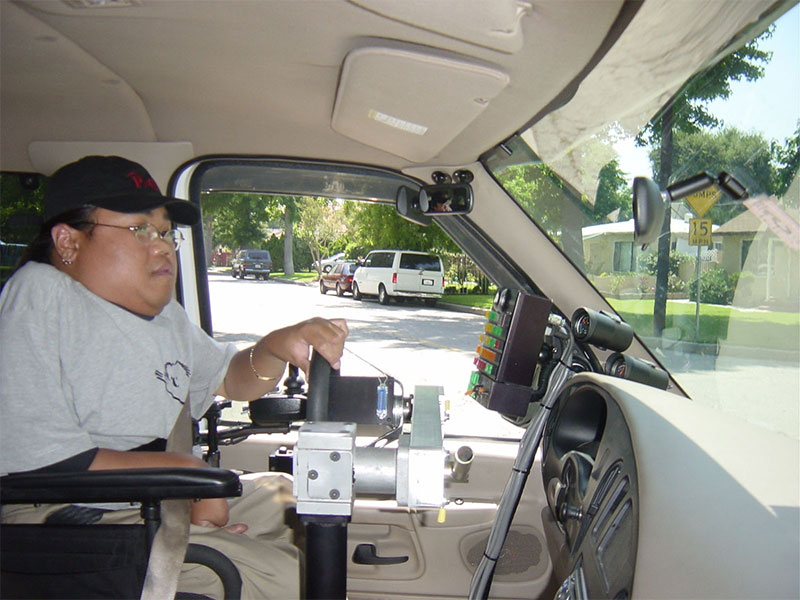Scott Driving System
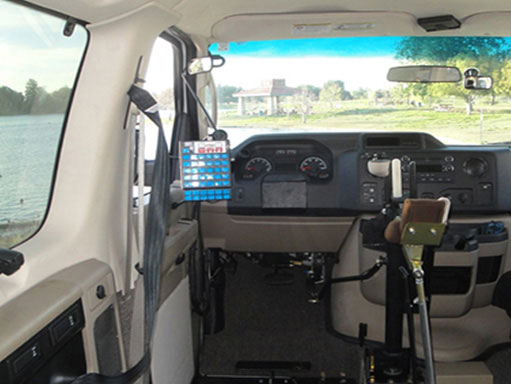
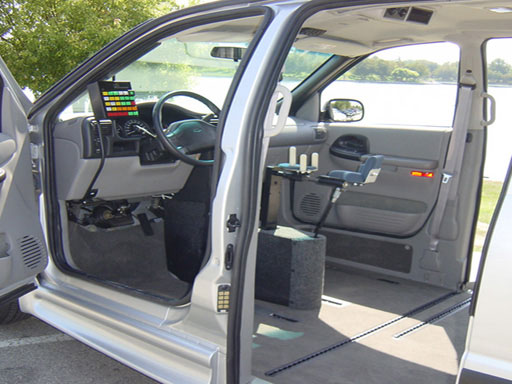
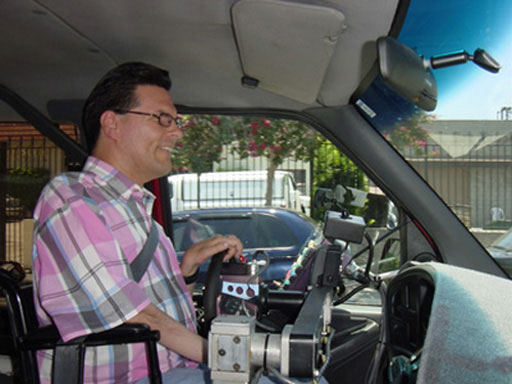
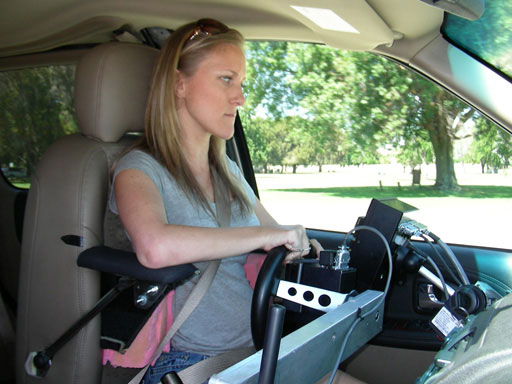
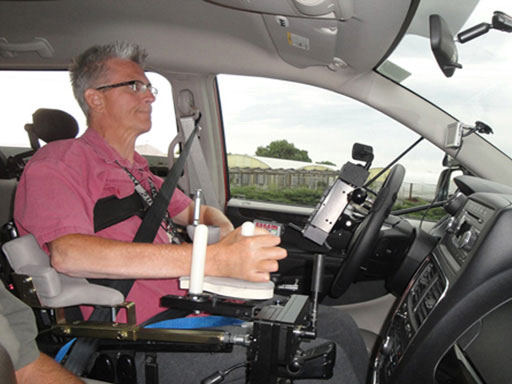
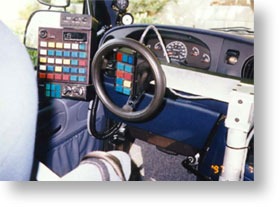
The Scott Driving System has all essential driving controls brought to a single vertical control column. Forward movement of the column opens the throttle providing control of power from the engine. Returning the control column to neutral returns the throttle to idle position. Movement of the column to neutral returns the throttle to idle position. Movement of the column toward the rear applies the vehicle brakes in proportion to the pressure applied to the column. At the top of the column is a cross arm with a mini steering wheel directly in front of the center of the driver. Rotation of the wheel Left or Right steers the vehicle. All systems are amplified so that the power and range of motion required of the driver are reduced to a minimum. The system provides for a minimum of 6 ounces of force required in the fore and aft and lateral planes. For persons who do not have finger dexterity or wrist function, such as high-level spinal cord injury, a Tri-pin device mounted at the top of the vertical column with a parallel arm support provided.
Steering Control
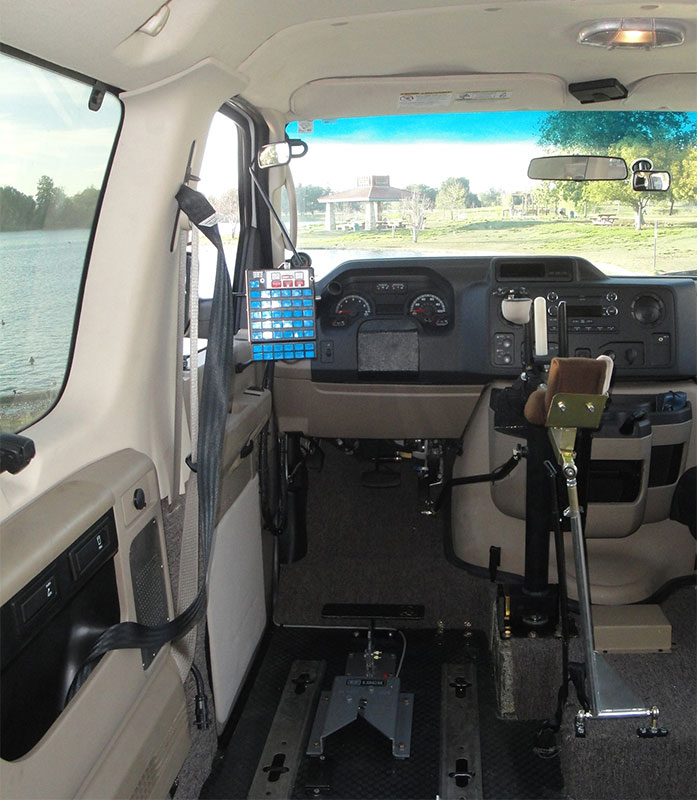
Power Steering
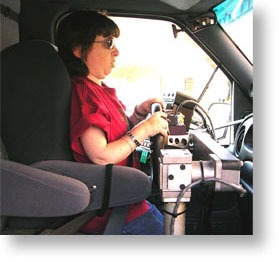
The Braking System
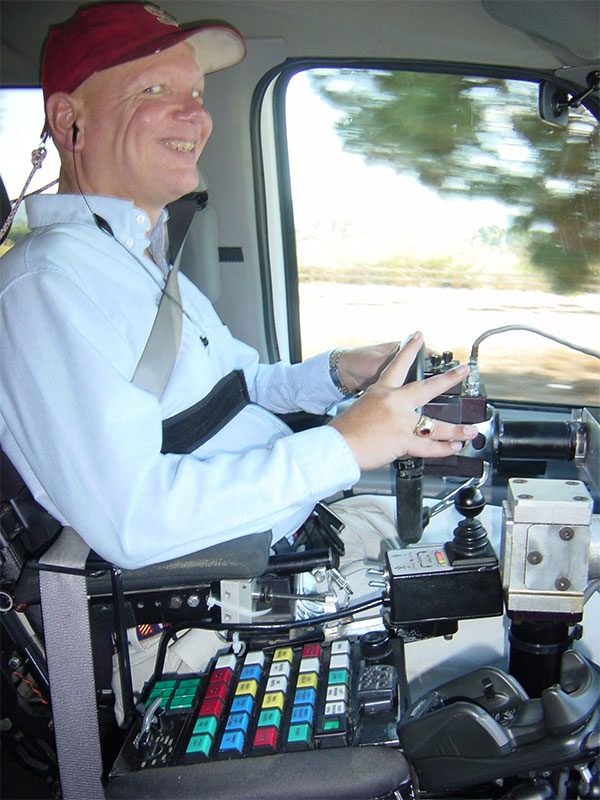
Electrical Controls
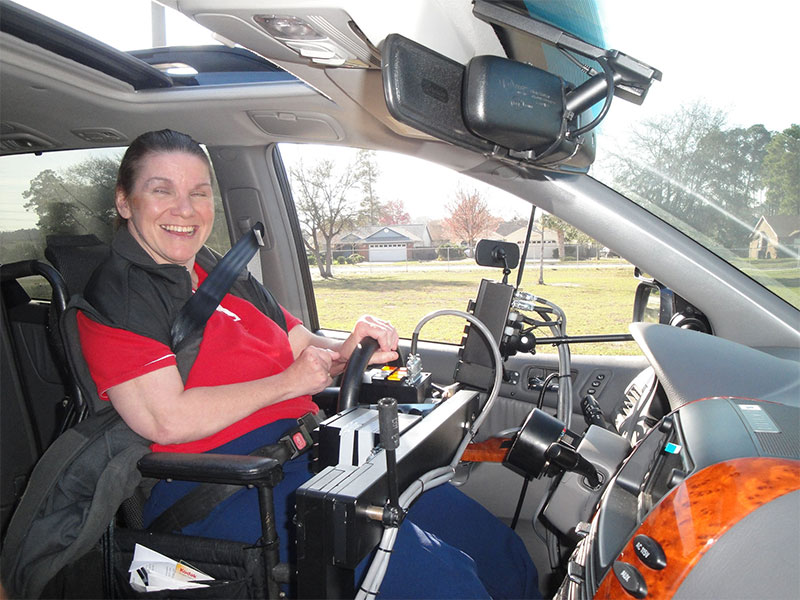
General Service Recommendations
